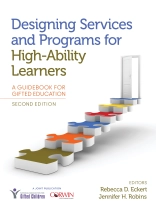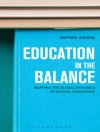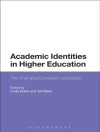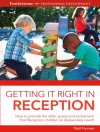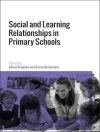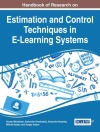The updated, comprehensive guide to developing or enhancing gifted programming
How do we ensure we are meeting the needs of gifted students? The educational landscape has changed dramatically since Designing Services and Programs for High-Ability Learners was first published in 2006. This updated and revised second edition of the landmark guidebook provides educators and administrators with the comprehensive, practical advice they need to support gifted learners, and includes new perspectives based on recent research and the updated National Association for Gifted Children Programming Standards. Written by leading experts, each chapter focuses on a key feature of high-quality gifted programs, from identification to evaluation and advocacy, and takes into account current trends in education, such as the
- Focus on diversity and the efforts needed to ensure underrepresented populations are screened for gifted education
- Collaboration with special education, families, and community members to ensure all students have access to programming and services
- Use of technology, especially in rural communities
- Development of local policies to support gifted education
Whether you are developing a new program or restructuring an existing service, this guidebook will help you meet the needs of today’s gifted students.
Daftar Isi
Acknowledgments
About the Editors
About the Contributors
Introduction
Chapter 1. Aligning Gifted Programming and Services With National and State Standards
Chapter 2. Developing a Mission Statement on the Educational Needs of Gifted and Talented Students
Chapter 3. Developing a Definition of Giftedness
Chapter 4. Constructing Identification Procedures
Chapter 5. Comprehensive Program Design
Chapter 6. Creating a Comprehensive and Defensible Budget for Gifted Programs and Services
Chapter 7. Providing Programs and Services for Gifted Students at the Elementary Level
Chapter 8. Providing Programs and Services for Gifted Students at the Secondary Level
Chapter 9. Services That Meet the Social and Emotional Needs of Gifted Children
Chapter 10. Attending to the Needs of Twice-Exceptional Learners
Chapter 11. Promoting Opportunity, Rigor, and Achievement for Underrepresented Students
Chapter 12. Designing a Professional Development Plan
Chapter 13. Collaborating With Families to Support Gifted Students
Chapter 14. Planning for Advocacy
Chapter 15. Developing Local Policies to Guide and Support Gifted Programs and Services
Chapter 16. Developing a Plan for Evaluating Services Provided to Gifted Students
Chapter 17. Using Scientifically Based Research to Make Decisions About Gifted Education Programs, Services, and Resources
Appendix A. Establishing Gifted Education Advisory Committees
Appendix B. NAGC Pre-K–Grade 12 Gifted Programming Standards
Index
Tentang Penulis
Rebecca D. Eckert, Ph.D., is an associate clinical professor in Teacher Education at the Neag School of Education at the University of Connecticut, where she works with preservice teachers as they navigate the joys and challenges of their first classroom experiences. In her former role as the Gifted Resource Specialist for the National Association for Gifted Children (NAGC), Rebecca helped to redesign the NAGC website and develop practical resources for educators and advocates of gifted students. Her previous work at The National Research Center on the Gifted and Talented included participation in Javits research at both the elementary and secondary levels. Her research interests include talented readers, recruitment and preparation of new teachers, arts in the schools, and public policy and gifted education. She is a former middle school teacher with experience in geography, history, and theatre arts.
